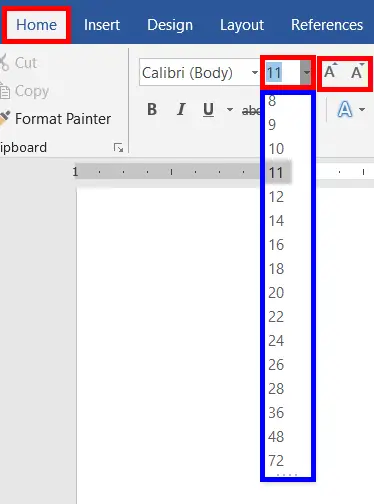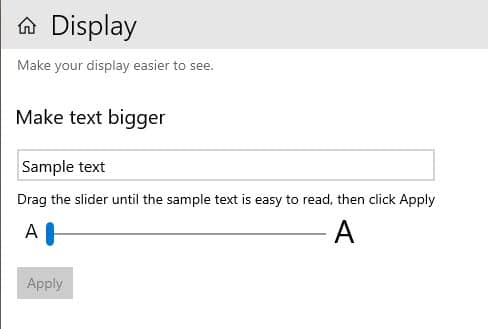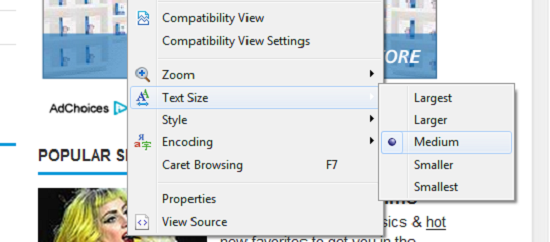

- #INCREASE FONT SIZE TEXMACS PDF#
- #INCREASE FONT SIZE TEXMACS CODE#
- #INCREASE FONT SIZE TEXMACS PROFESSIONAL#
- #INCREASE FONT SIZE TEXMACS WINDOWS#
Unlike StackOverflow, they use a WYSIWYG editor. I've recently started using Quora a bit more. WYSIWYG is ultimately not an ideal editing paradigm: it wins in the short term, being easy to learn, but drags you down in the long term. In fact, I'd say that going all the way would be almost a step back. ★ Type the following script and call it CompileLaTeX.With inline LaTeX previews, we're already surprisingly close. Let’s write a useful little bash script to compile latex with bibtex. Why has this not been fixed? I am not sure - keep an eye out, and it might well be (and then, raise an issue on TheMulQuaBio’s Github!)Īnyway, as such, you don’t have to run these commands literally step by step, because you can create a bash script that does it for you, as we will now learn. The reason why it is this way, is probably that back then (Donald Knuth’s PhD Thesis writing days – late 1950’s to early 1960’s), computers had tiny memories (RAMs), and writing files to disk and then reading them back in for the next step of the algorithm/program was the best (and only) way to go. PHEW! Why go through this repetitive sequence of commands? Well, “it is what it is” – \(\LaTeX\), with all its advantages does have its quirks.

log file plays no role except to record info about how the commands are running.
#INCREASE FONT SIZE TEXMACS PDF#
pdf file, with citations correctly formatted.Īt this step, latex knows what the correct in-text citation labels are, and includes them in the pdf document. The third and final pdflatex run then updates FirstExample.log and x one last time, and now produces the complete. aux file (but the non in the actual pdf). The most commonly used Latex environments are:Ĭenter the elements (works for text as well as graphics)Īn itemized list (default is bullet points)Īn enumerated list (default is Arabic numerals)

Will produce “Here is some text” centered in the middle of the page. Images and floats are easy to embed, and won’t jump around like Word, but if you don’t use the right package, they can be difficult to place where you want! Tracking changes are not available out of the box (but can be enabled using a suitable package)
#INCREASE FONT SIZE TEXMACS WINDOWS#
#Ĭan be difficult to manage revisions with multiple authors – especially if they don’t use LaTeX! (Cue: Windows on a virtual machine!) Latex files for really large and complex documents (such as PhD Theses) are much easier to edit, manage and publish in specific formats (like pdf) than Word or Open Office documents. 11 LaTeX documents scale up better then WYSIWYG editors. You can integrate LaTeX into a workflow to auto-generate lengthy and complex documents (like your thesis).įig. Plenty of online support available – your question has probably already been answered Referencing (bibliography) is easy (and can also be version controlled) and works with tools like Mendeley and Zotero You can focus on content, and not worry so much about formatting while writingĪn increasing number of Biology journals provide \(\LaTeX\) templates, making formatting quicker. LaTeX is very stable – current version basically same since 1994! (9 major versions of MS Word since 1994 – with compatibility issues) Mathematical formulas (esp complex ones) are easy to write
#INCREASE FONT SIZE TEXMACS PROFESSIONAL#
LaTeX produces beautiful, professional looking docs LaTeX compilers are freely available for all OS’Įxactly the same result on any computer (not true for Word, for example)
#INCREASE FONT SIZE TEXMACS CODE#
The file is then “compiled” (like source code of a programming language) into a file – typically in PDF. Text formatting is done using markups (like HTML). tex) with certain typesetting (tex) syntax.

In LaTeX, the document is written in a text file (. However, an alternative especially suited for scientific publications is LaTeX. These documents can be written using a WYSIWYG (What You See Is What You Get) editor (e.g., Word). In your research, you will produce papers, reports and-very importantly-your thesis. Scientific documents with \(\LaTeX\) # Introduction #


 0 kommentar(er)
0 kommentar(er)
